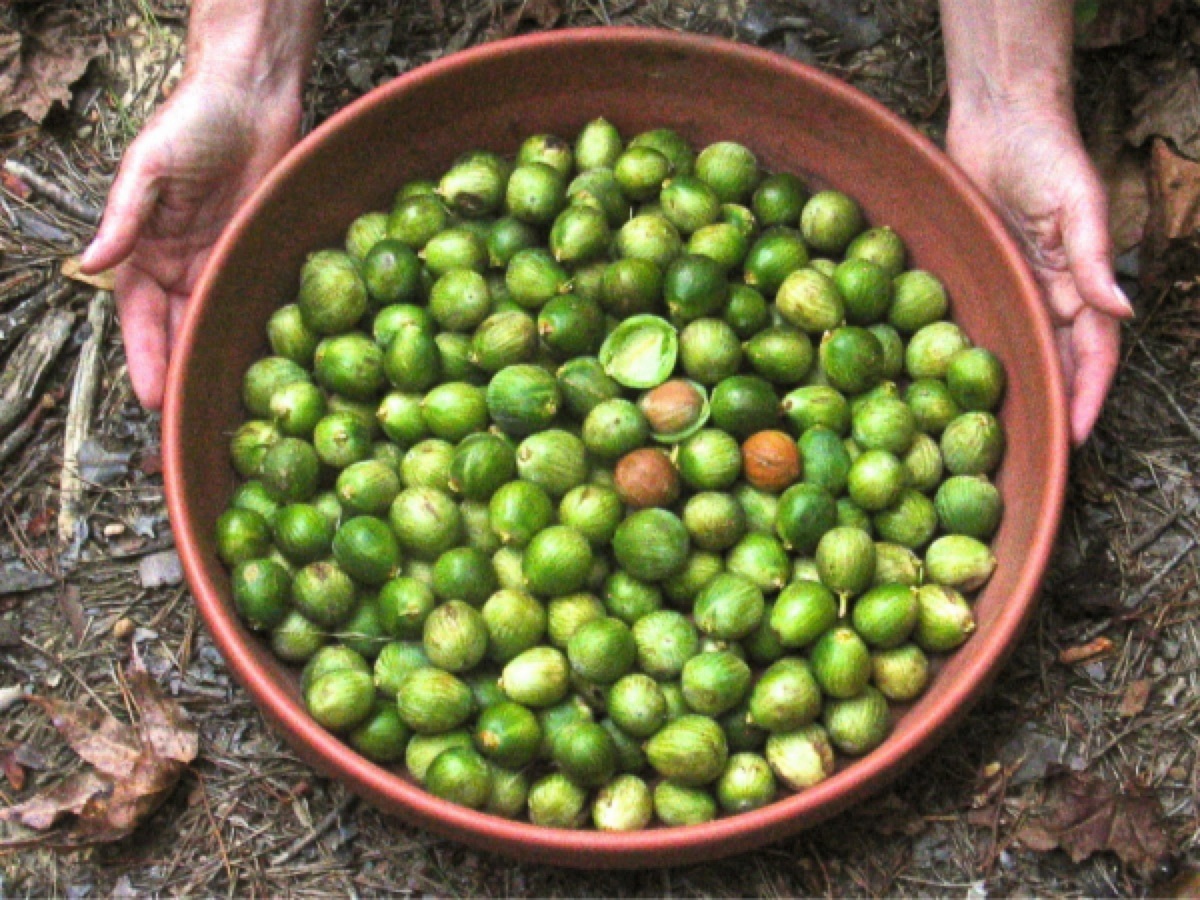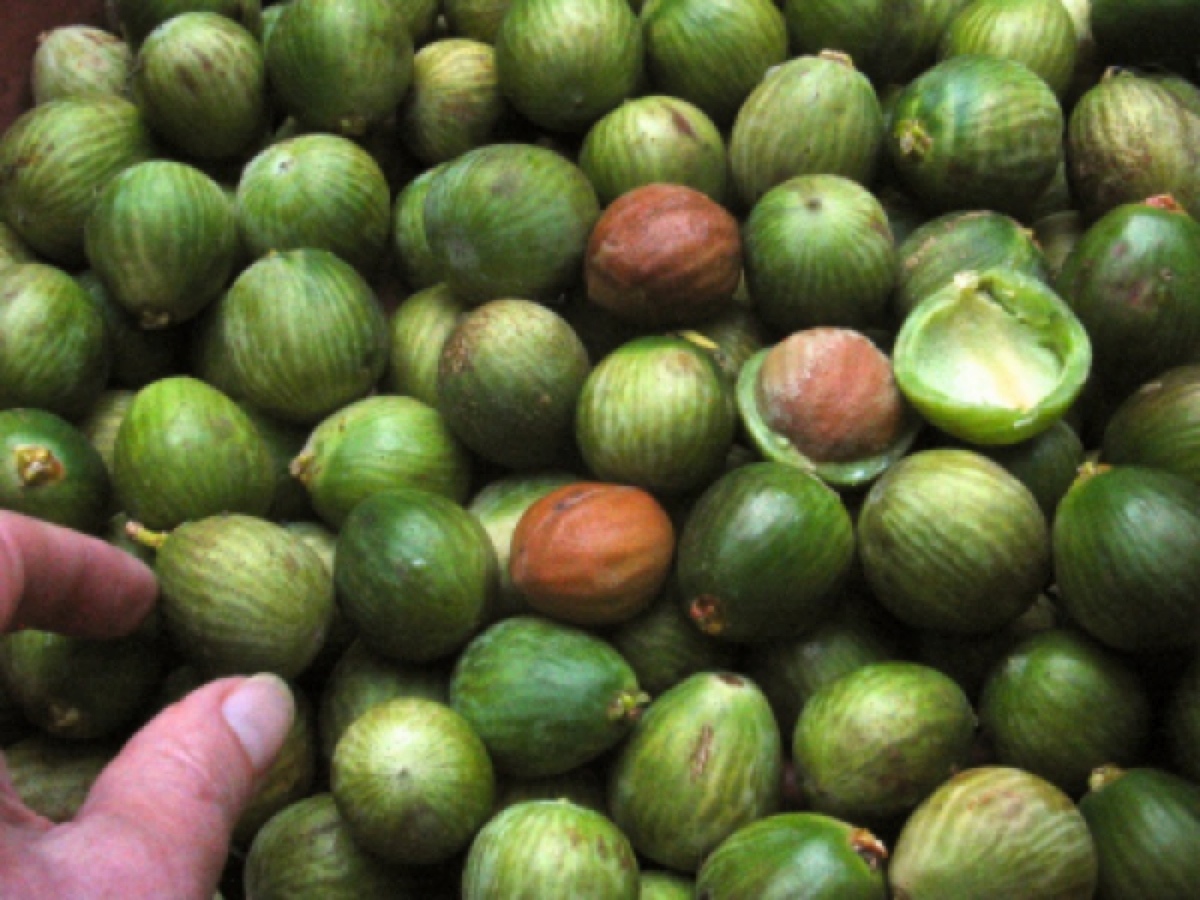
Reports of Distributions of Torreya taxifolia Seeds

Torreya seeds from October 2013 harvest

Report of 2011 Seed Harvest Distribution (approx 700 seeds) - available in PDF.
Report of 2009 Seed Distribution
(by Lee Barnes)
OVERVIEW
I wanted to share with everybody the current distribution of the 2009 harvest of 300 seeds donated by the Biltmore Estate in Asheville, NC. I have focused on finding allies at Arboretums and Botanical Gardens and a few key seed persons. I have about 65 seeds remaining that I am removing from the 40 degree F refrigerator to a protected outside area where they will be exposed to our seasonal alternating day/night temperatures for cold stratification. My intent is to keep some seeds here in Waynesville for 1) a germination test comparing seeds that 'float' and seeds that 'sink' while processing after collection, and 2) using as transplants to add to the further diversity at our current plantings in the Waynesville area. A few sets of 10 seeds are available for further distribution to interested individuals.
1) Dr. Ed Croom, Croomia Botanical Scientific and Regulatory Affairs Consulting. Oxford MS - 20 seeds. For investigation of possible seed endophytes, possible seed-born pathogens and preliminary Torreya genetic marker work.
2) Joe Hollis, Mountain Gardens Herbs, Burnsville NC - 20 seeds. Joe is a regional expert on growing rare species and has one of the best collections of native and Chinese medicinal herbs in the Eastern USA. (http://mountaingardensherbs.com)
3) Jack Johnson, Lakemont GA - 50 seeds. Jack is a long term Torreya Guardian who has been successful with Torreya seed germination. (See the photo-essay of Jack's Torreya work; scroll down the page to Activity 1). Our intent is to produce additional transplants for planting in northern GA and at the Waynesville, NC planting sites.
4) Dr. Bruce Rinker, Charles de Souza, Roger Harris, Alex Niemiera of North Cross School, Roanoke VA - 20 seeds. For germination test and their Hahn Botanical Garden at Virginia Polytech Institute.) Alex currently has an 8-foot specimen that has survived their winters there. They have experience with Torreya cutting propagation.
5) Didier Maerki, Geneva, Switzerland - 20 seeds. For Arboretum de Villardebelle (http://pinetum.org) for germination test. Didier is another long-term Torreya Guardian, with experience with several Torreya spp. They have recently updated their Torreya germination photos on their website.
6) Sylvain Meier, Nyon, Switzerland - 20 seeds. For Swiss National Arboretum (http://www.arboretum.ch) for germination test; a long-term Torreya Guardian.
7) Dr. Mike Ecker and Rich Larson, Newark OH - 20 seeds. For Dawes Arboretum for germination test and winter hardiness evaluation. They had successful germination of 4 seedlings from 2006 distribution of 10 seeds.
8) Ms. Dena Rae Garvue, Clermont KY- 20 seeds. To Bernheim Arboretum and Research Forest (http://bernheim.org) for germination test and their collections.
9) Dr. Ted Bilderback and Mark Weathington, Raleigh NC - 20 seeds. For J.C. Ralston Arboretum (http://www.ncsu.edu/jcraulstonarboretum) germination test and their collection. They currently have a couple of T. taxifolia in their collection.
10) Dr. Lee Barnes, Waynesville NC - 65 remaining seeds. For further distribution; cold stratification and seed germination; and production of additional transplants to increase genetic diversity at established plantings in and near Waynesville.
Buford Nature blogs on his experience as a Torreya Guardian and 2009 seed recipient.
Several folks have commented on the need to not let seeds dry out prior to cleaning and stratification. I am concerned that seeds that 'float' may have lower germination due to drying or less stored food, etc. But Dr. Croom noted that he had heard of good germination of 'floater' seeds (personal communications with Maclay Gardens in Tallahasse FL, who indicated 80% germination from floaters). Others suggested soaking seeds for 24 hours after cleaning. I retested my initial 'floaters' that had been stored for several weeks in moist sphagnum moss and found that most were now 'sinkers.' I did have one uncleaned seed that had rolled behind a container and dried for two weeks that audibly 'rattled' inside the woody seed coat. I tried resoaking the seed but it remained a 'floater' after several days of soaking. This suggests to me that as little as two weeks seeds can dry out a seed, so I suggest that all seeds be stored in moist sphagnum immediately upon collection and prior to removing fleshy tissues by cleaning. I am curious if the floating seeds might have aided distribution of a species now primarily found growing along a major river?
The fleshy seed coat (sarcotesta) is incredibly sticky and stayed glued to my hands after a dozen hand washings. The only other plant with seeds this difficult to clean in my experience is the Osage Orange.
EDITOR'S NOTE to all Torreya propagators: Check periodically the official PROPAGATION ADVICE page on this website, as we try to keep it up to date with feedback we hear from growers on best practices for success.
Lee Barnes
SEED DISTRIBUTION LIST
NOTES ON SEED HANDLING:
Ph.D. Environmental Horticulture
Land Stewardship Consulting/ Stewardship Dowsing
Unique Mountain Properties - http://www.UniqueMountainProperties.com
PO Box 1303, Waynesville NC 28786
Return to HOME PAGE of Torreya Guardians or visit 2005 Seed Distribution Photoessay